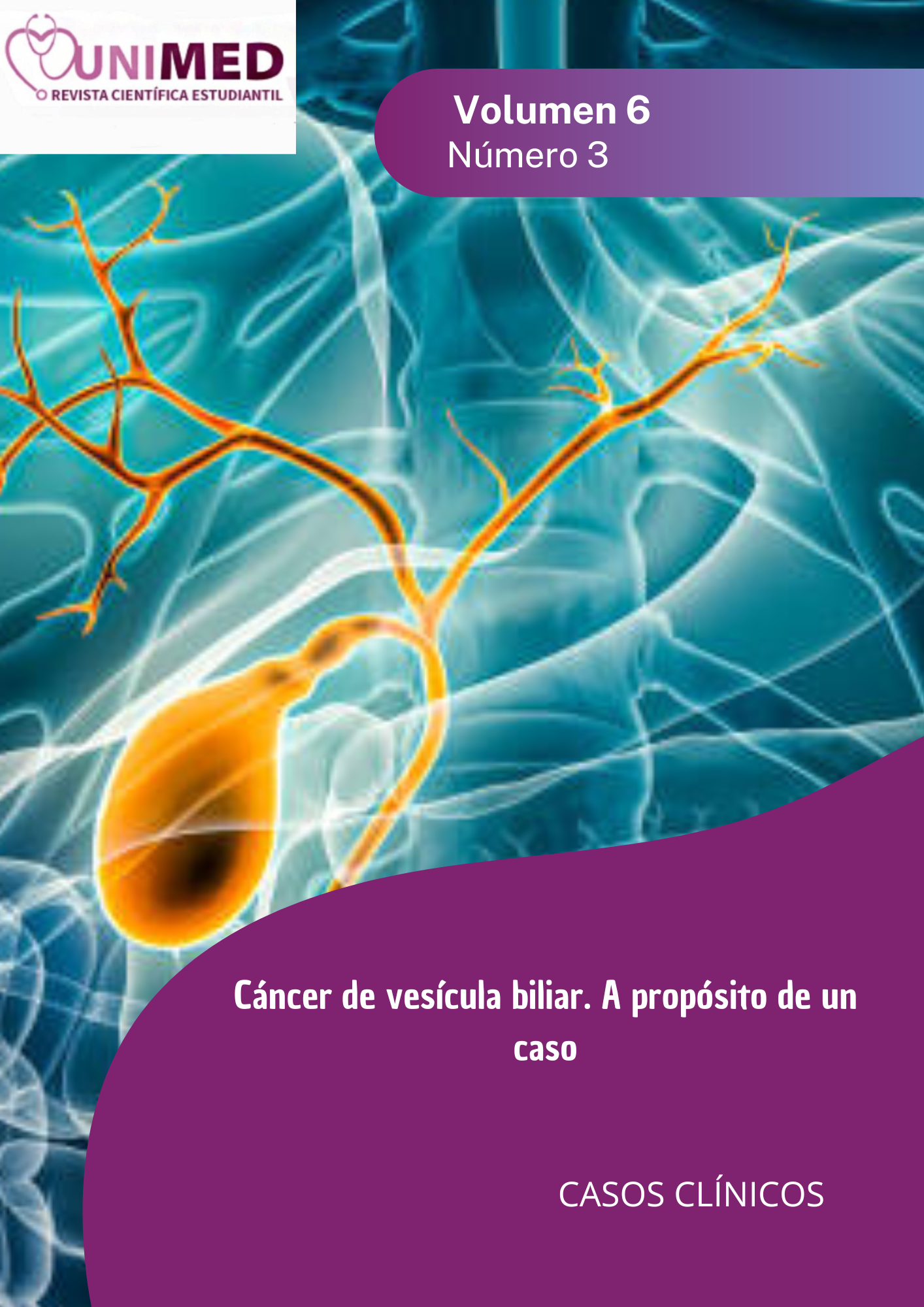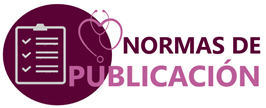Gallbladder cancer. About a case
Keywords:
Cancer, Carcinoma, Clinical Case, Early Diagnosis, Abdominal Pain, Case Report, GallbladderAbstract
Gallbladder cancer is the most frequent aggressive neoplasm of the biliary tract, with a poor prognosis, and is a challenge due to its advanced stage at the time of diagnosis. It ranks fifth in order of frequency among malignant neoplasms of the digestive system. A 58-year-old male patient with a history of alcohol consumption, gastric ulcer, and emergency surgery for a perforated gastric ulcer 25 years ago is presented. He was admitted to medical services with abdominal pain after eating fats and pain in the right iliac fossa. A series of complementary studies were performed and gallbladder cancer was diagnosed. It is concluded that the timely diagnosis of gallbladder cancer and the performance of cholecystectomy in early stages of the disease is the main cause of survival in these patients.Downloads
References
Soler Vaillant, Rómulo. Cirugía. Afecciones del abdomen y otras especialidades quirúrgicas/ Rómulo Soler Vaillant, Orestes Noel Mederos Curbelo. T. 5. —La Habana: Ecimed, 2018.
Zhu D, Gu X, Lin Z, Yu D, Wang J. High expression of PSMC2 promotes gallbladder cancer through regulation of GNG4 and predicts poor prognosis. Oncogenesis. [Internet] 2021 [citado 05/06/2024]; 10(5):43. Disponible en: https://pubmed.ncbi.nlm.nih.gov/34016944/
Roa JC, García P, Kapoor VK, Maithel SK, Javle M, Koshiol J. Gallbladder cancer [published correction appears in Nat Rev Dis Primers. 2022 Nov 18; 8(1):75]. Nat Rev Dis Primers. [Internet] 2022 [citado 05/06/2024]; 8(1):69. Disponible en: https://pubmed.ncbi.nlm.nih.gov/36302789/
Krell RW, Wei AC. Gallbladder cancer: surgical management. Chin Clin Oncol. [Internet] 2019 [citado 05/06/2024]; 8(4):36. Disponible en: https://pubmed.ncbi.nlm.nih.gov/31431029/
Schmidt MA, Marcano-Bonilla L, Roberts LR. Gallbladder cancer: epidemiology and genetic risk associations. Chin Clin Oncol. [Internet] 2019 [citado 05/06/2024]; 8(4):31. Disponible en: https://pubmed.ncbi.nlm.nih.gov/31484487/
Feo CF, Ginesu GC, Fancellu A, et al. Current management of incidental gallbladder cancer: A review. Int J Surg. [Internet] 2022 [citado 05/06/2024]; 98:106234. Disponible en: https://pubmed.ncbi.nlm.nih.gov/35074510/
Erdem S, White RR. Incidental Gallbladder Cancer: Permission to Operate. Ann Surg Oncol. [Internet] 2020 [citado 05/06/2024]; 27(4):980-982. Disponible en: https://pubmed.ncbi.nlm.nih.gov/31722073/
Baichan P, Naicker P, Devar JWS, Smith M, Candy GP, Nweke E. Targeting gallbladder cancer: a pathway based perspective. Mol Biol Rep. [Internet] 2020 [citado 05/06/2024]; 47(3):2361-2369. Disponible en: https://pubmed.ncbi.nlm.nih.gov/32020429/
Wu X, Li B, Zheng C, Liu W, Hong T, He X. Incidental gallbladder cancer after laparoscopic cholecystectomy: incidence, management, and prognosis. Asia Pac J Clin Oncol. [Interne] 2020 [citado 05/06/2024]; 16(3):158-164. Disponible en: https://pubmed.ncbi.nlm.nih.gov/32030891/
Silva DAGD, Veloso OLL, Valadares MSP, et al. Incidental gallbladder cancer: what is the prevalence and how do we perform cholecystectomy for presumably benign biliary disease?. Rev Col Bras Cir. [Internet] 2023 [citado 05/06/2024]; 49:e20223417. Disponible en: https://pubmed.ncbi.nlm.nih.gov/36629721/
Aloraini A, Alshehri K, Alshammari R, et al. Late port-site metastasis of unexpected gallbladder carcinoma after laparoscopic cholecystectomy: A case report. Medicine (Baltimore). [Internet] 2024 [citado 05/06/2024]; 103(18):e37880. Disponible en: https://pubmed.ncbi.nlm.nih.gov/38701302/

Downloads
Published
How to Cite
Issue
Section
License
Los autores/as que publiquen en la revista UNIMED mantienen sus derechos de autor y ceden los derechos de publicación a la revista, su artículo estará simultáneamente sujeto a la Licencia de reconocimiento de Creative Commons (CC-BY-NC 4.0)
Los autores/as no ceden los derechos patrimoniales a la revista UNIMED, ni transfieren sus derechos de autor al editor.
Se permite y recomienda a los autores/as difundir su obra a través de Internet (p. ej.: en archivos telemáticos institucionales o en su página web) antes y durante el proceso de envío, lo cual puede producir intercambios interesantes y aumentar las citas de la obra publicada.
De igual manera podrán establecer acuerdos adicionales para la distribución no exclusiva de la versión de la obra publicada en la revista (por ejemplo, situarlo en un repositorio institucional o publicarlo en un libro), con el reconocimiento de haber sido publicado primero en esta revista.










